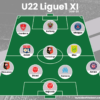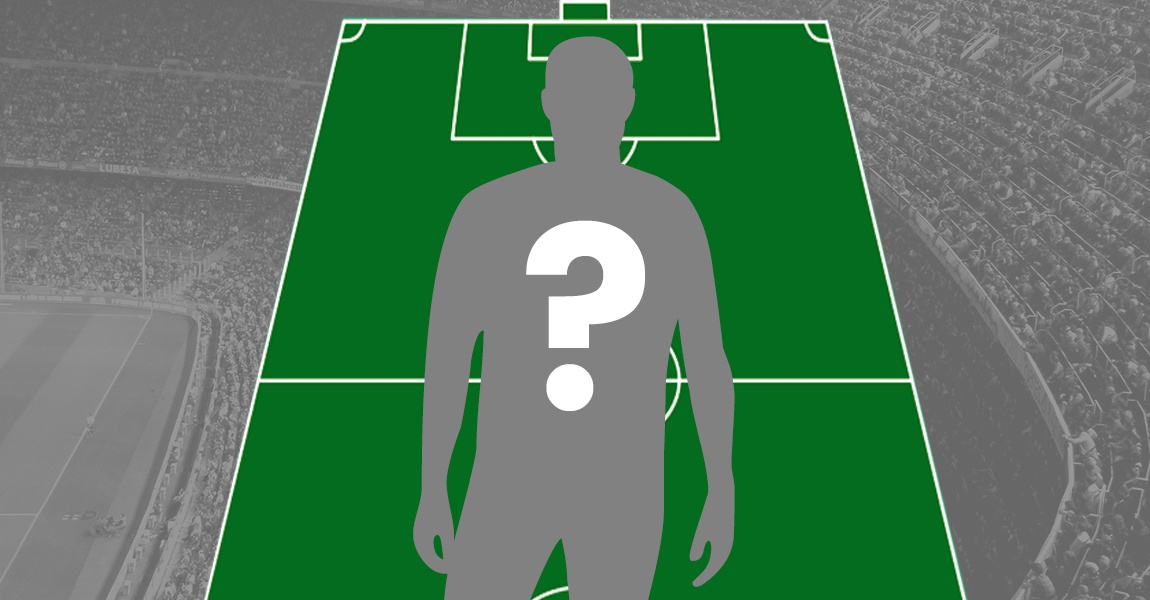Eric Devin writes a detailed tactical analysis about the Ligue 1 match that ended Lyon 3-1 Marsielle.
Marseille, humbled against Monaco last weekend, entered Sunday’s clash with Lyon with a point to prove. A good run of form prior to the winter break had done wonders and suggestions emerged that the team’s “Champions Project” under the stewardship of Frank McCourt might actually be ahead of schedule, driven by several young players and the management of Rudi Garcia. Last weekend’s comprehensive loss to Monaco put lie to that, however, with Marseille suffering their first home defeat of the season to the Ligue 1 leaders, 4-1.
The scoreline of that match does slightly flatter Monaco, though, and for at least the first forty minutes, l’OM gave as good as they got. When Bernardo Silva scored on the stroke of halftime to make it 3-1, there was something of the sucker punch about the goal, and Marseille failed to recover after the interval. The question on Sunday at the Parc OL, then, was whether or not the visitors could shake off that setback and play 90 minutes with the same energy that they had displayed in the opening stages against Monaco. On the evidence on display against Lyon, however, the answer was a decided negative.
Line Ups:
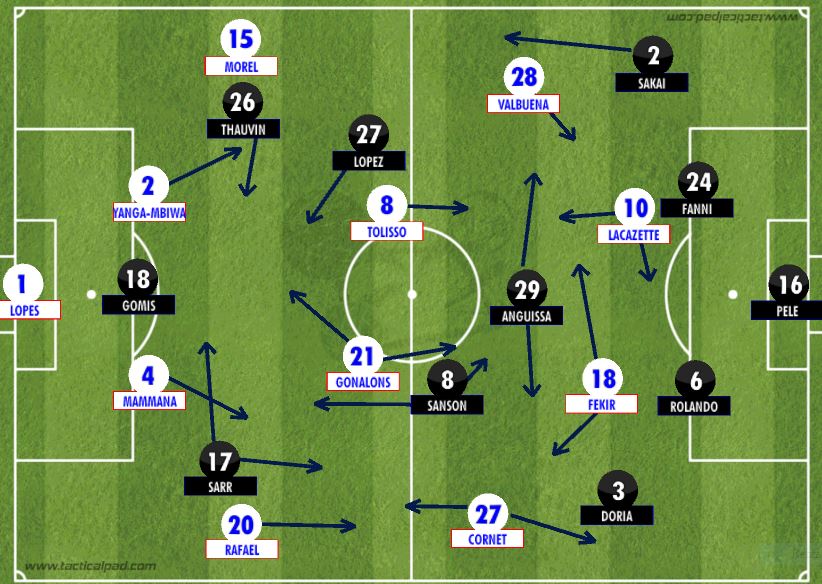
Olympique Lyonnais (4-4-2): Anthony Lopes; Rafael, Emanuel Mammana, Mapou Yanga-Mbiwa, Jérémy Morel; Maxwel Cornet, Maxime Gonalons, Corentin Tolisso (Jordan Ferri 85′), Mathieu Valbuena (Memphis Depay 79′); Nabil Fekir (Lucas Tousart 71′), Alexandre Lacazette
Olympique de Marseille (4-3-3): Yohann Pele; Hiroki Sakai, Rod Fanni, Jorge Rolando, Matheus Doria; Maxime Lopez (Romain Alessandrini 66′), André-Frank Zambo Anguissa, Morgan Sanson; Florian Thauvin (Saif-Eddine Khaoui, Bafétimbi Gomis, Bouna Sarr (Rémy Cabella 66′)
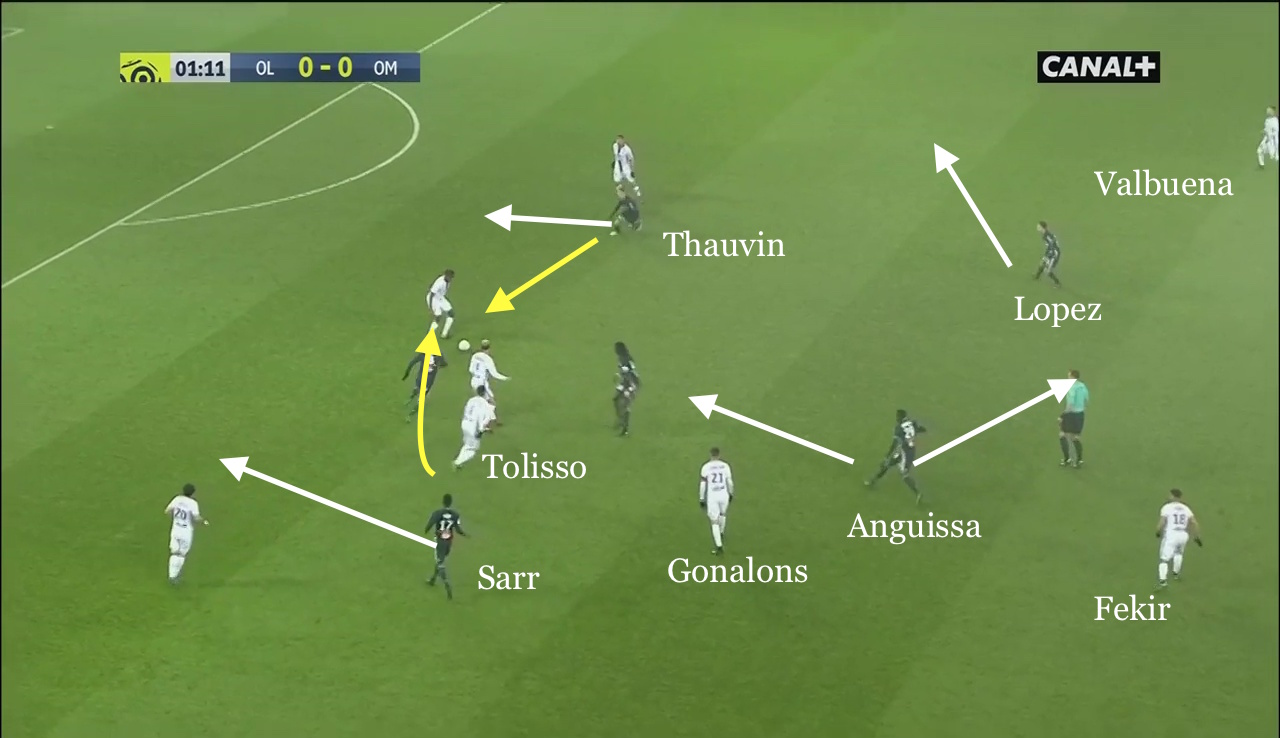
Things started brightly for Marseille, much as they had against Monaco. Lyon’s center back partnership on the evening, Mammana and Yanga-Mbiwa, had never played together before, and with the Argentine just back from a two-month injury lay-off, they were the obvious weak link for the hosts. Here, we see how Marseille sought to put pressure on the two center backs, using all six forward players in a press when they were in possession of the ball. New signing Sanson and Florian Thauvin (yellow arrows) were the chief instigators in this regard, but there was more than just the former Montpellier man’s energy at play, as the image shows.
Defensive midfielder Anguissa has also joined the chase, taking up a position that cuts out the angles to Fekir and Gonalons, while Lopez guards against a long ball to Valbuena, behind him. Lyon’s central midfielders, Tolisso and Gonalons are forced to drop very deep, making themselves an option for a short pass from the centre backs. Gonalons is never much of a threat going forward, but those who have seen Lyon in action over the last three seasons know the threat that Tolisso can pose on the counter, and the youngster was summarily ineffective in the match’s early stages.
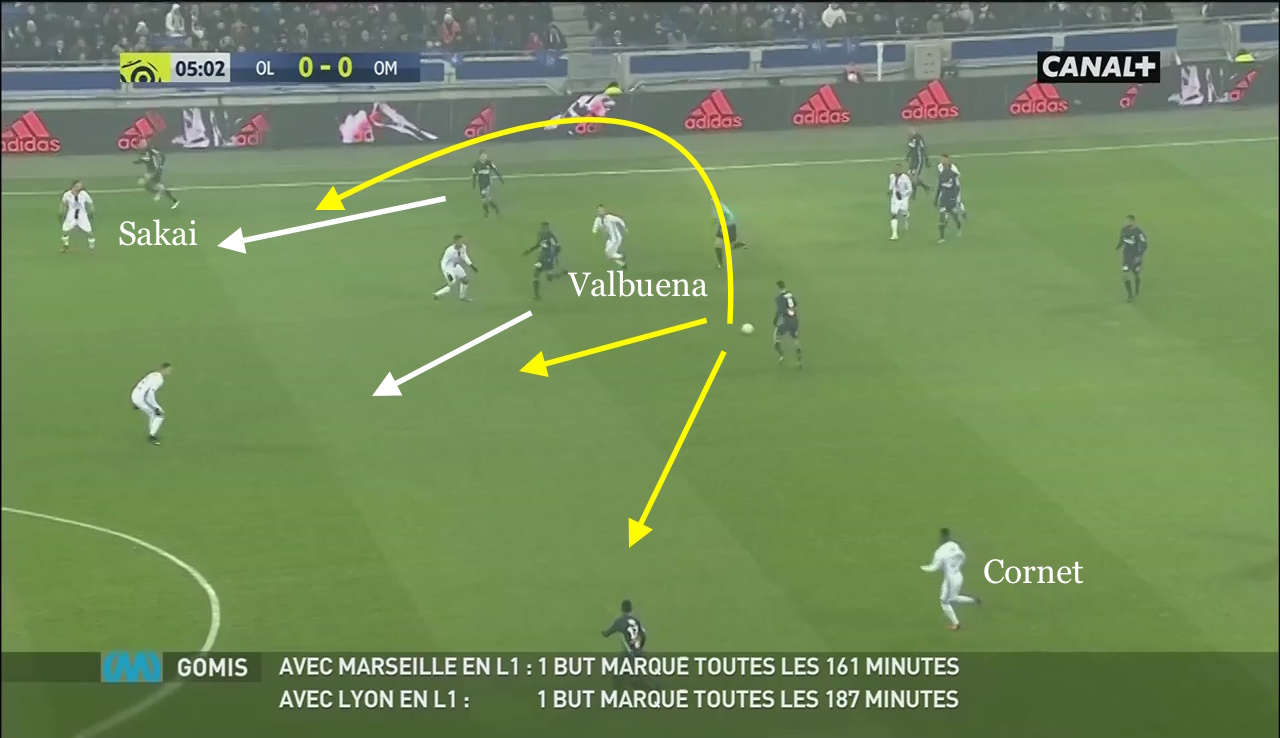
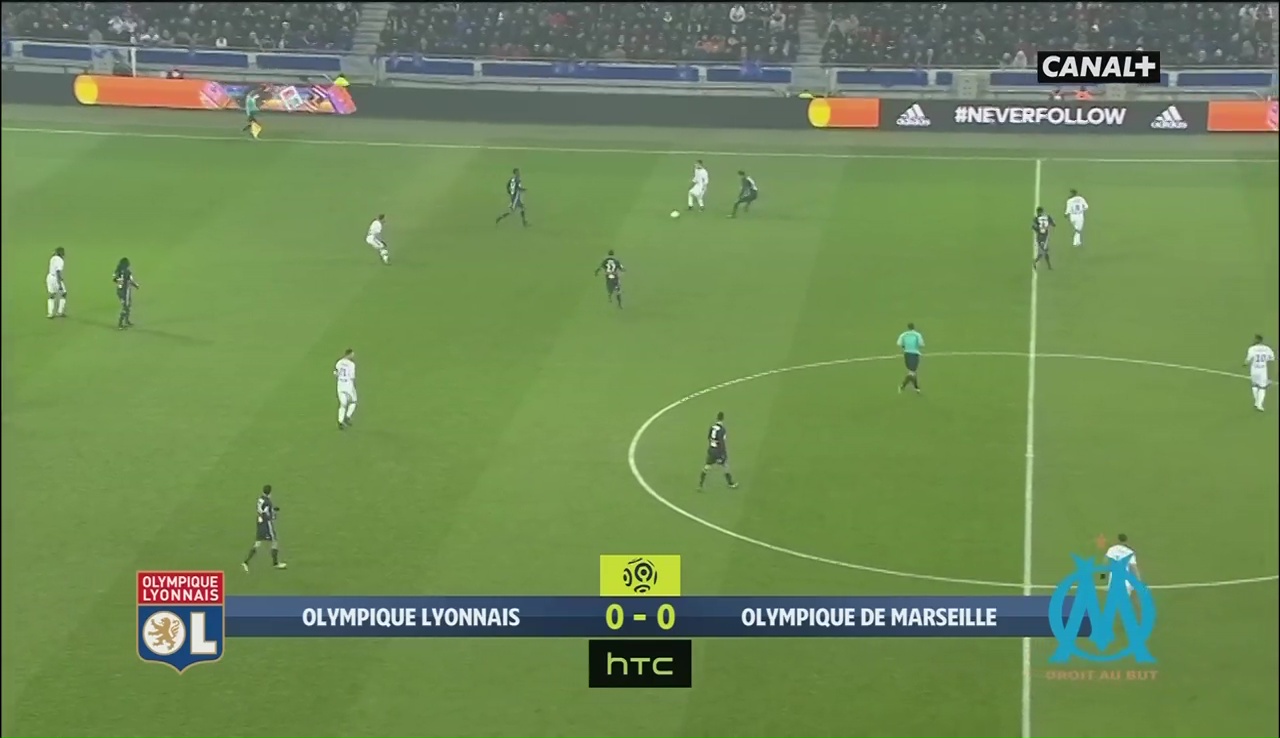
Adding to this, Marseille were also able to use a fair bit of adaptability in their playing staff. In the absence of the suspended William Vainqueur, Marseille used Anguissa as the nominal holding midfielder, and the youngster had a solid match, getting about the pitch to support the center backs when the fullbacks got forward. Anguissa, though, is normally a box-to-box midfielder, much like new acquisition Sanson, and the pair seemed to establish a good rapport. Here, Sanson is in possession, and the forward runs of Lopez and Anguissa (white arrows) force Lyon to push their midfield deep, with Valbuena and Cornet dropping back to cover.
Even so, Sanson is hardly starved of options, as he can play a ball over the top to Sakai or Lopez, a through ball to Anguissa, or switch play to Sarr on the opposite flank (yellow arrows). Marseille also did their best to confound Lyon by having Sarr and Thauvin switch flanks, as seen in the second image. Even though Sarr is not much of a threat with the ball at his feet, Thauvin operates much differently on the right that on left. In his normal position, he plays as an inverted winger, cutting inside to shoot, but on the left, he is more likely to use his acceleration to get to the byline to deliver a cross, which in turn forces Rafael to sit deep. The Brazilian, so often an eager presence going forward for Lyon, was thus much less effective in support of the attack, not being precisely sure of which wide player would be popping up on his flank. Marseille, though, despite forcing Lopes into a few fines saves, couldn’t profit from their early dominance, and Lyon started to adapt.
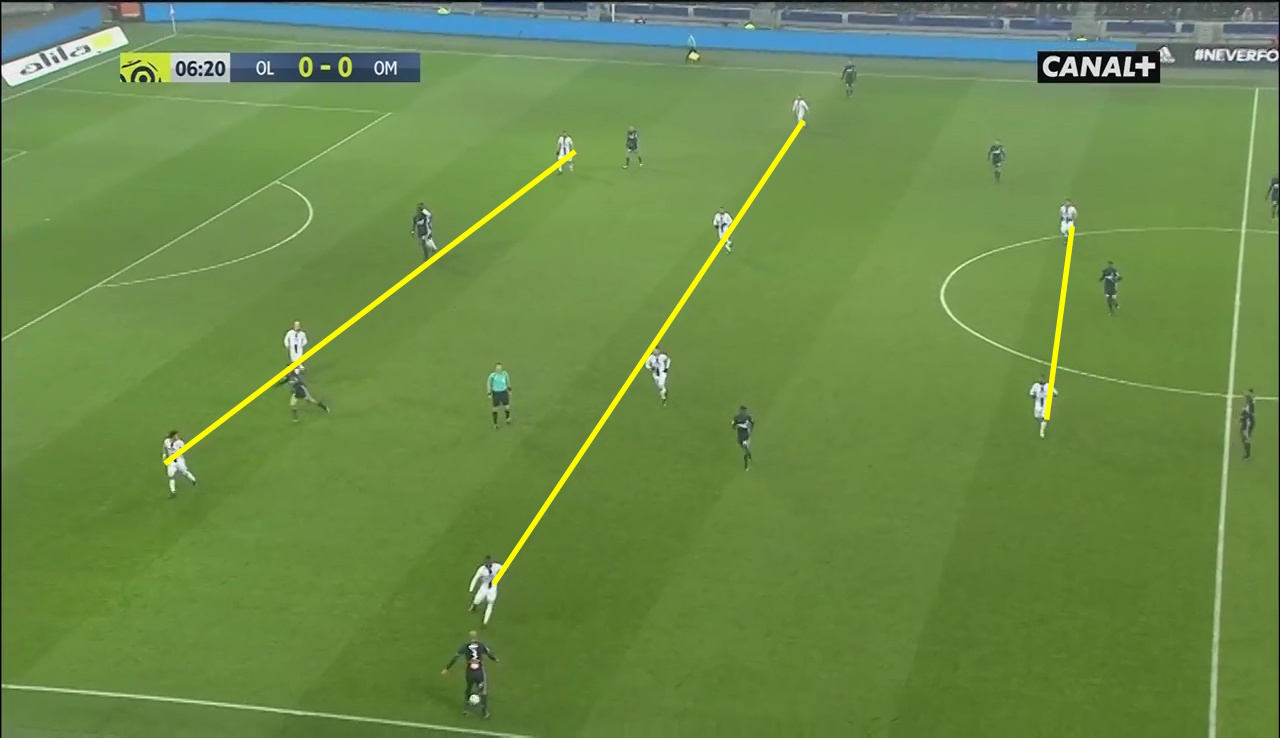

Several media outlets had been quick to label Lyon’s formation a 4-2-3-1, with Fekir used as a number ten behind Lacazette, but the formation was a more conventional 4-4-2, with the two strikers dropping deep to cut off return passes to the center backs or Anguissa. Lacazette and Fekir are both noted for the pace and finishing ability, but both also have an underrated strength. They are never going to be a holdup player along the lines of their former teammate Gomis, but Fekir in particular is remarkably well-built, with a low center of gravity that makes him very difficult to successfully tackle.
Here, Sakai has come forward to challenge Fekir, as shown by the white arrow, but the Lyon player has held him off superbly, presenting himself with a wide range of options. Lacazette is the furthest player forward and offers a chance for Fekir to release the ball into the space behind himself and run on to a reverse pass going towards goal. Closer to Fekir, Tolisso and Valbuena are making runs for a lay-off, while on the flank, Morel prepares to run into the space vacated by Sakai. In this particular instance, Fekir switched play to Morel, who dithered in getting his cross off, giving Fanni enough time to block it, something which was a continued source of frustration for Lyon on both flanks.
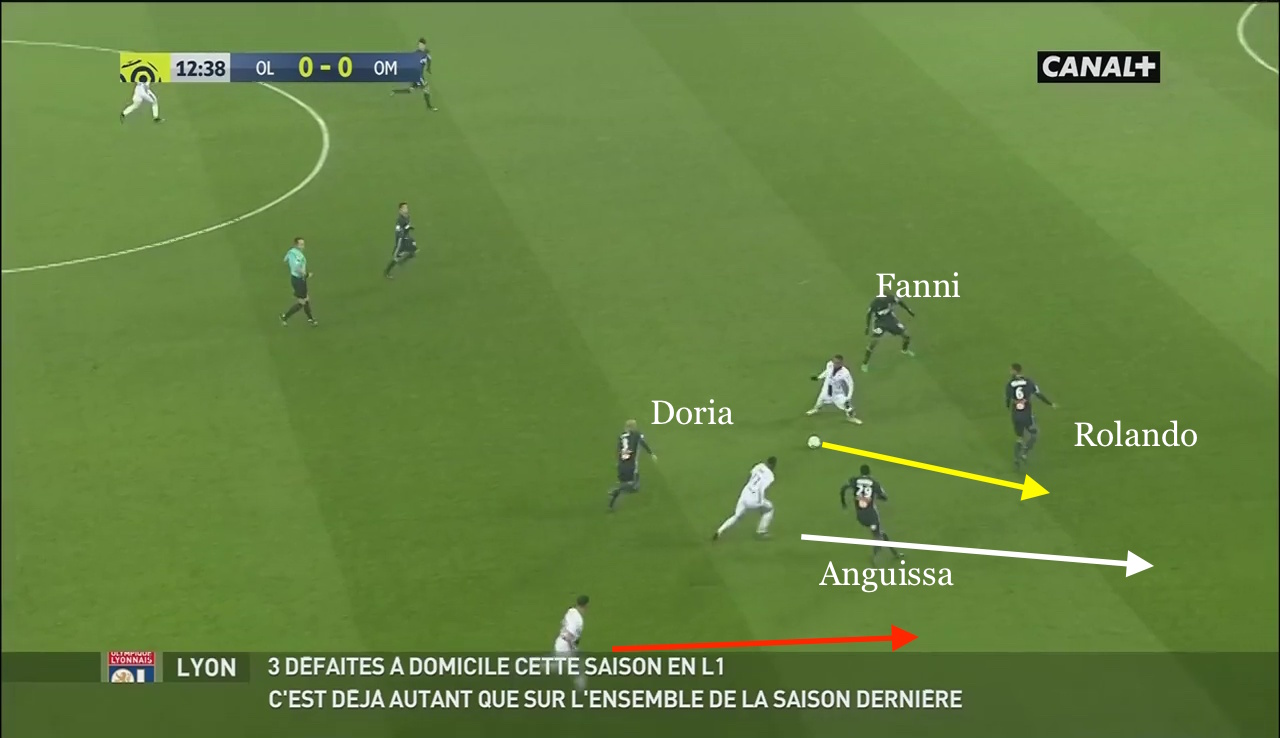
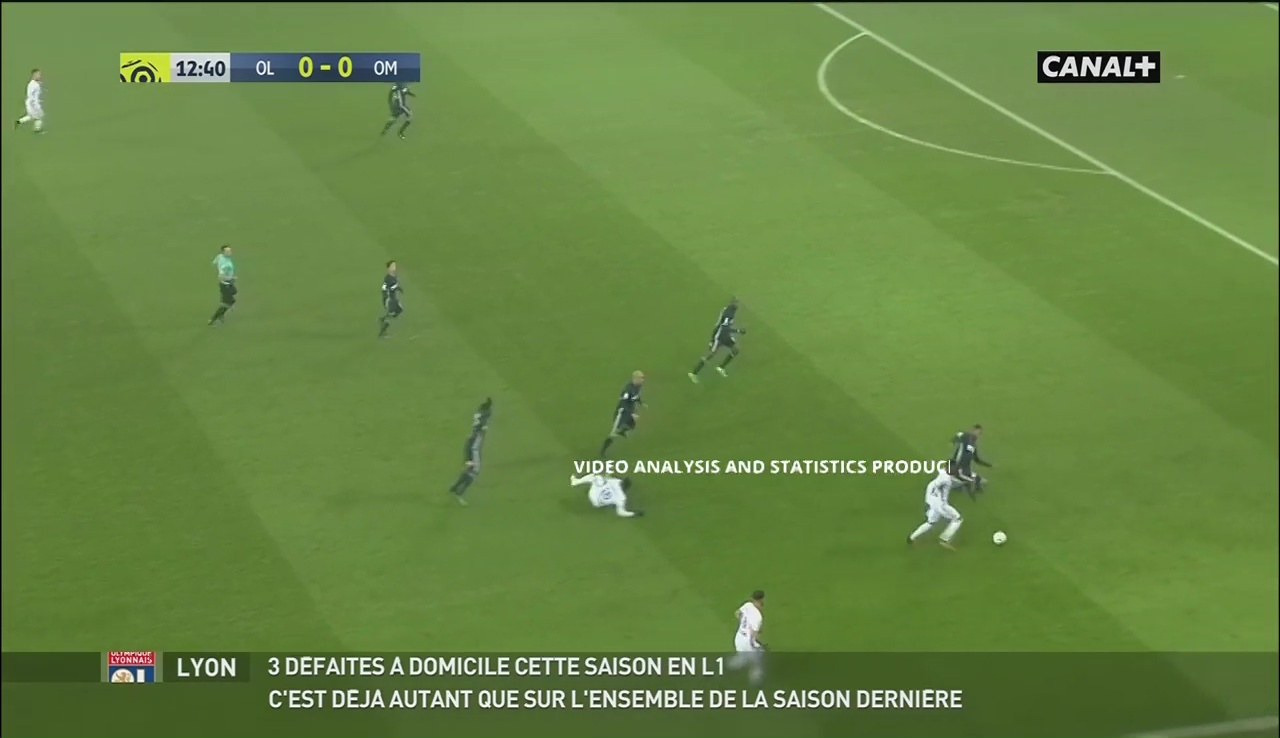
Lacazette, while being a bit more wiry than Fekir, is also superb at holding up play, and in the first image, he has drawn no less than four Marseille defenders. Having been caught out playing on the counter, Doria struggles to get back, but instead of tracking the run of Cornet (white arrow), he rushes to pressure Lacazette on the ball, even as both center backs and Anguissa do the same. Lacazette then finds it tremendously easy to switch play to Cornet (yellow arrow), who has support from Fekir on the outside (red arrow). As the second image shows, this works perfectly, with Lacazette being bundled over by Doria, but not before releasing Cornet, a very speedy player, into a one-on-one with Rolando with Fekir in support.

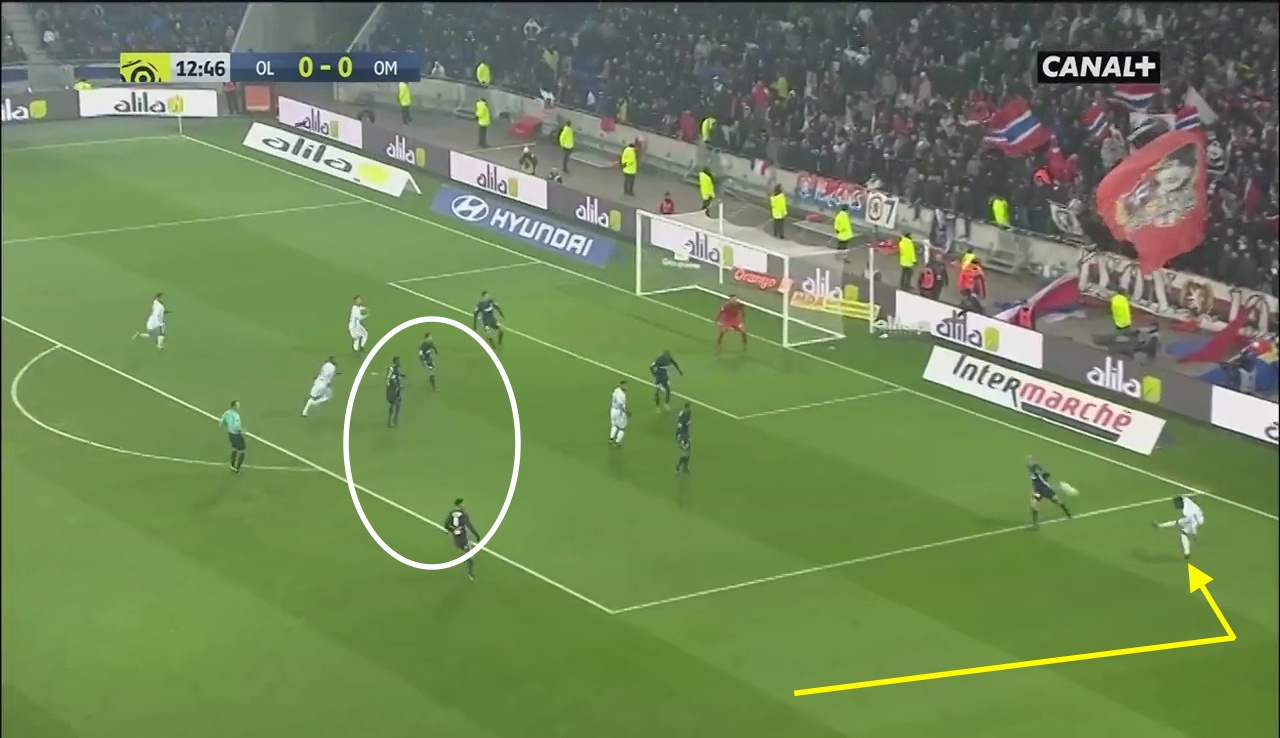
Cornet easily evades a clumsy challenge from Rolando and is away down the flank, with Lacazette and Fekir heading towards the box (white arrows) to get on the end of a cross. Doria (yellow arrow), having realized his mistake, thus moves to pressure Cornet. In the second image, though, we see how the youngster’s hesitation has seen the opportunity go begging. As Lyon pour into the box, the player has made a 90 degree turn (yellow arrow), angling his body away from the ball to use his left foot to make the cross. This not only allows Marseille to get men into the box, as shown by the three midfielders in the white oval, but gives Doria, no slouch himself in the speed department enough time to pressure Cornet as he makes the cross.
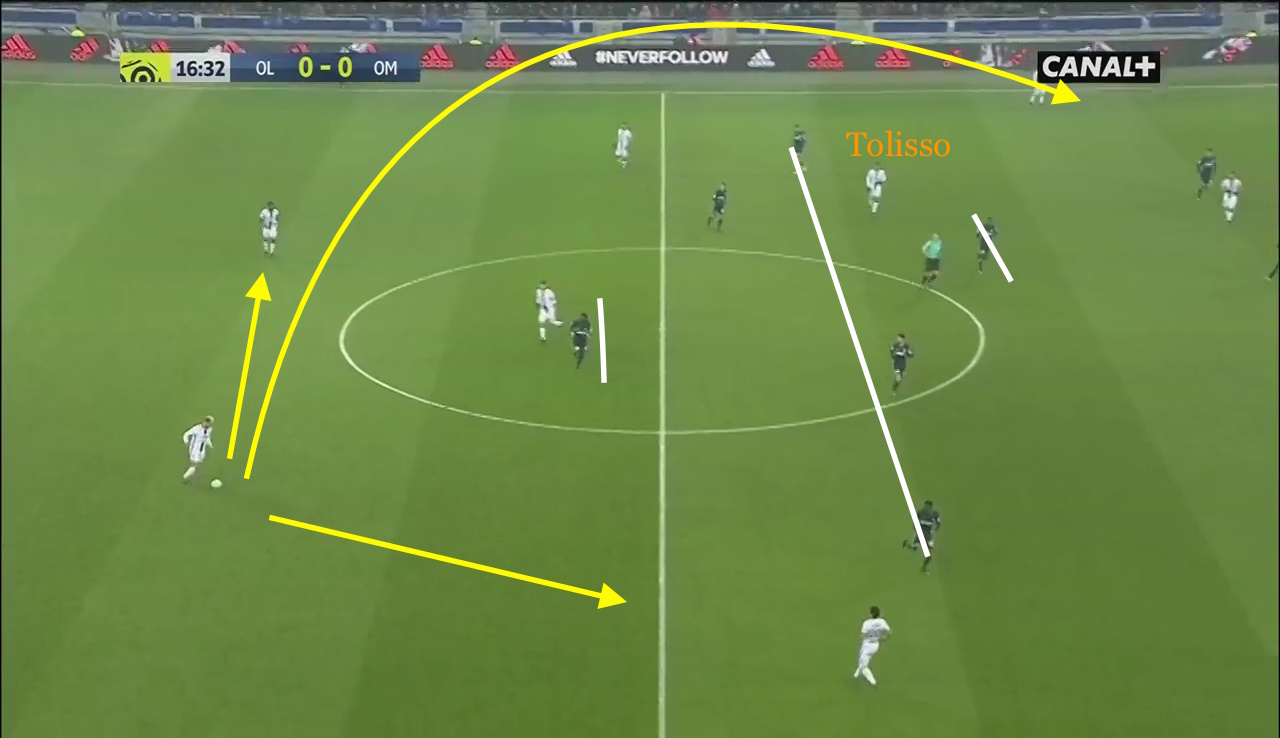
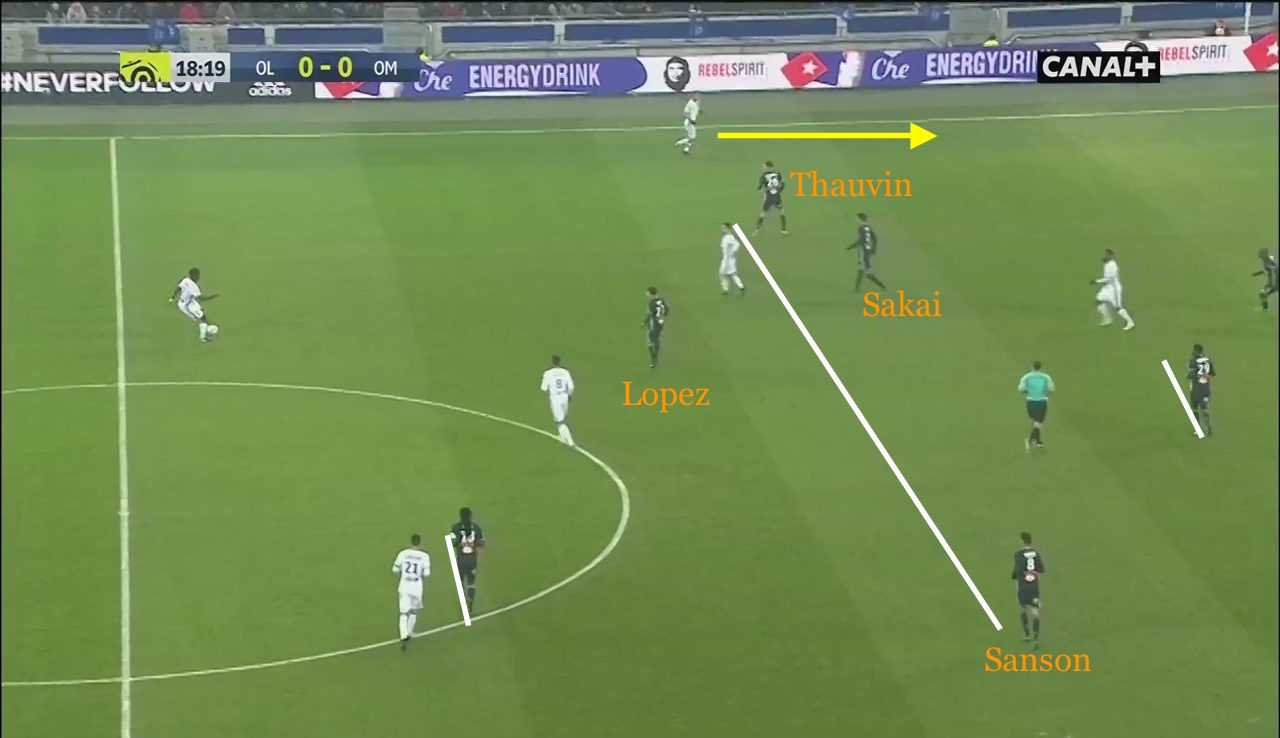
However, even as Lyon struggled with the lack of decisiveness on the part of their wide players, Marseille slowly but surely abandoned their press. In the first image, the visitors are playing what is essentially a 4-1-4-1, with Sanson and Lopez ahead of Anguissa in midfield. Thauvin and Sarr have dropped deep, while Gomis applies token pressure on Gonalons. Meanwhile, Mammana (with ball) has plenty of time to pick his pass (yellow arrows); he can give the ball to his fellow centre back, Yanga-Mbiwa, play a raking ball toward Valbuena on the opposite flank, or play it close on the near sideline for Rafael. None of his three targets save perhaps the Brazilian are particularly well-marshalled at this point in time, and the young Argentine is a decent passer of the ball. Note also that Tolisso, now freed from having to drop deep for the ball, can be an auxiliary attacker, playing in the seams behind Marseille’s bank of four.
In the second image, Marseille are even more open, as Sakai has tucked in to track a potential run by Valbuena. However, in doing so, he has afforded Morel acres of space for a ball over the top. Failing this, Tolisso has also dropped deep to offer a short ball from which he can turn and dribble at Marseille’s midfield. Tolisso himself is a also a capable of playing a long ball, and Marseille’s increasing failure to put pressure on either of the two midfielders or centre backs made it too easy for Lyon to shorten the pitch, which had the knock-on effect of not over-taxing Cornet and Valbuena as regards their defensive responsibilities.
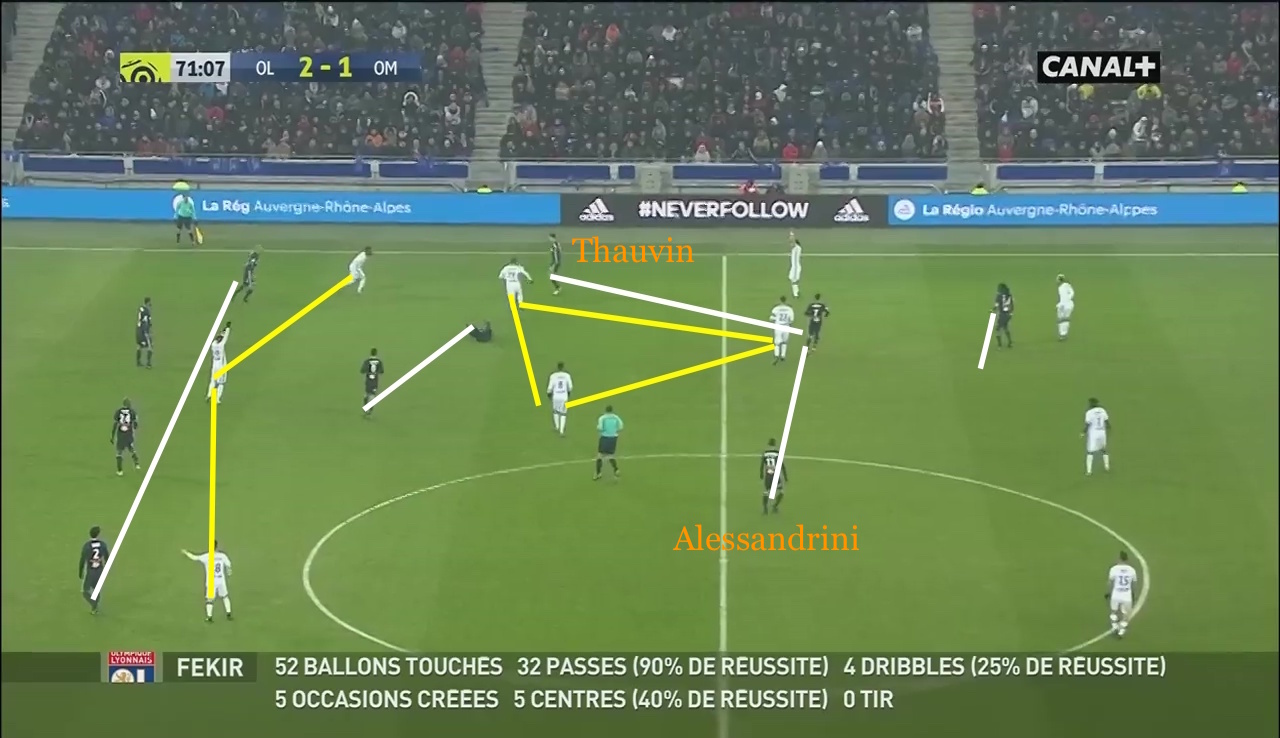
With Lyon not having to work as hard running the channels, the attack quartet, particularly Lacazette, had more energy to press high, and it was easy for him to net a brace by pouncing on mistakes by Sanson and Rolando. Wanting more attacking impetus after Lyon’s second, Garcia made the match’s first changes, bringing in Rémy Cabella to act as a playmaker, while Romain Alessandrini and Thauvin played wide in a 4-2-3-1 (white lines). Marseille did score from a set piece shortly thereafter, but Bruno Genesio, perhaps feeling a bit of insecurity, brought in Lucas Tousart for Fekir.
The youngster is seen as the heir apparent to Gonalons, and while he is not quite as prosaic as the captain, his inclusion was a clear sign that Lyon intended to seal the result. Here, we can see OL’s midfield playing compactly (yellow triangle) with Cornet and Valbuena providing the width. In this way, Lyon bossed the midfield, and even though Garcia’s changes were nominally positive, Sanson and Anguissa sat in front of the defense, forcing Thauvin and Alessandrini to drop deep for the ball. Gomis was thus isolated and easily marked out of the match, not only assuring Lyon of the victory but perhaps providing a blueprint for the hosts as to how to deal with potential opponents in European play.
Thus, while Marseille’s December was encouraging, January has been a harsh reality check. Lyon are nowhere near the level of Monaco, but they, like the leaders, were able to keep Marseille firmly in check. Garcia’s charges certainly had the right idea initially, and played with great energy, but their inability to sustain this style of play indicates a gap that should be measured in more than points. Signings such as Sanson and Patrice Evra are steps in the right direction, but Marseille’s tactical naiveté and lack of focus showed that there is still much work to be done.
Read all our tactical analyses here






















































